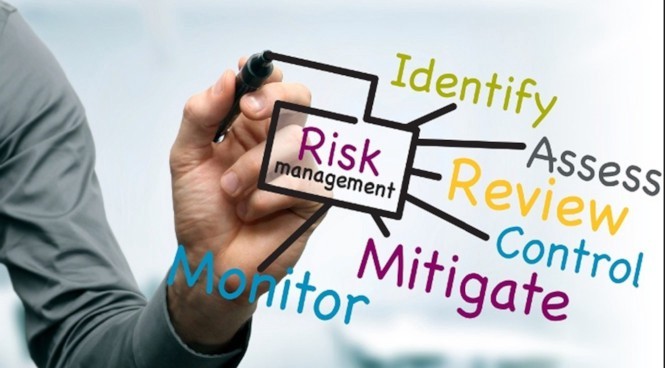
Diagnosed with SMM, SPB, or MGUS?
Learn how you can stall the development of full-blown Multiple Myeloma with evidence-based nutritional and supplementation therapies.
Click the orange button to the right to learn more.
- You are here:
- Home »
- Blog »
- Pre-Myeloma »
- High Risk Smoldering Myeloma?
High Risk Smoldering Myeloma?

“A markedly elevated serum free light chain (FLC) ratio may serve as a biomarker for malignant transformation in high-risk smoldering multiple myeloma (SMM) and identify patients who are at imminent risk of progression.
Hi David. I was diagnosed with smoldering multiple myeloma 18 months ago. I fit many of the things you describe & now, because my plasma levels were high, when tested 18 months ago & now my Kappa/Lambda ratio has gone over 100, to 114, after ranging between 45 & 98, for the past 18 months.
My haematologist says it’s time to start the treatment that will lead up to a stem cell transplant.
Fact is that since diagnosis, I’ve never felt better. I have:
- gone on a plant based,
- no gluten or dairy diet,
- I lost 10kg’s in 4 months.
Have continued with my fitness program & have had a cracker year on the bike, my first as a grand master (60+) athlete. Doing several multi day MTB stage races, winning my category & also now the current South African MTB marathon champ.
No symptoms whatsoever & the second CT scan I’ve just had, show, like the last one 18 months ago, no lesions on the bone at all.
Would really appreciate your input re how I can best benefit from your knowledge the best way forward for me. NOT keen on mainstream medication. Kind Regards. Don
Hi Don-
- The conventional therapy plan. Once you are formally diagnosed with MM and begin treatment, you will undergo induction (RVd- 4-6 courses) an autologous stem cell transplant and probably low-dose maintenance therapy.
- The non-conventional therapy plan. You can choose to pursue anti-angiogenic foods and supplements as well as lifestyle therapies shown to reduce your risk of a MM diagnosis.
- A combination of conventional and non-conventional therapy plan. Undergo non-conventional therapies discussed in #2 but also undergo conventional induction therapies, at least until you achieve remission. Research confirms that you will respond well, with less toxicity (chemo) because you are early MM (less cancer burden) and you have been “pre habilitating.”
David Emerson
- MM Survivor
- MM Cancer Coach
- Director PeopleBeatingCancer
Recommended Reading
- Single Plasmacytoma, MGUS or SMM? To treat or watchful waiting
- Smoldering Multiple Myeloma-Delay Treatment Until Progression!
- Risk of Progression for Smoldering Multiple Myeloma is Reduced…at what cost?
Serum free light chain ratio as a biomarker for high-risk smoldering multiple myeloma
“A markedly elevated serum free light chain (FLC) ratio may serve as a biomarker for malignant transformation in high-risk smoldering multiple myeloma (SMM) and identify patients who are at imminent risk of progression.
We retrospectively studied the predictive value of the serum (FLC) assay in 586 patients with SMM diagnosed between 1970 to 2010. A serum involved/uninvolved FLC ratio ≥100 was used to define high-risk SMM, which included 15% (n = 90) of the total cohort.
Receiver operating characteristics analysis determined the optimal FLC ratio cut-point to predict progression to symptomatic multiple myeloma (MM) within 2 years of diagnosis, which resulted in a specificity of 97% and sensitivity of 16%. Fifty-six percent of patients developed progressive disease during median follow-up of 52 months, but this increased to 98% in the subgroup of patients with FLC ratio ≥100. The median time to progression in the FLC ratio ≥100 group was 15 months versus 55 months in the FLC <100 group (P<0.0001). The risk of progression to MM within the first 2 years in patients with an FLC ratio ≥100 was 72%; the risk of progression to MM or light chain amyloidosis in 2 years was 79%. We conclude that a high FLC ratio ≥100 is a predictor of imminent progression in SMM, and such patients may be considered candidates for early treatment intervention.
Multiphasic Prehabilitation Across the Cancer Continuum: A Narrative Review and Conceptual Framework
“The field of cancer survivorship has significantly advanced person-centered care throughout the cancer continuum.
Within cancer survivorship, the last decade has seen remarkable growth in the investigation of prehabilitation comprising pre-treatment interventions to prevent or attenuate the burden of oncologic therapies.
While the majority of evidence remains in the surgical setting, prehabilitation is being adapted to target modifiable risk factors that predict poor treatment outcomes in patients receiving other systemic and localized anti-tumor treatments. Here, we propose a multiphasic approach for prehabilitation across the cancer continuum, as a conceptual framework, to encompass the variability in cancer treatment experiences while adopting the most inclusive definition of the cancer survivor…”

